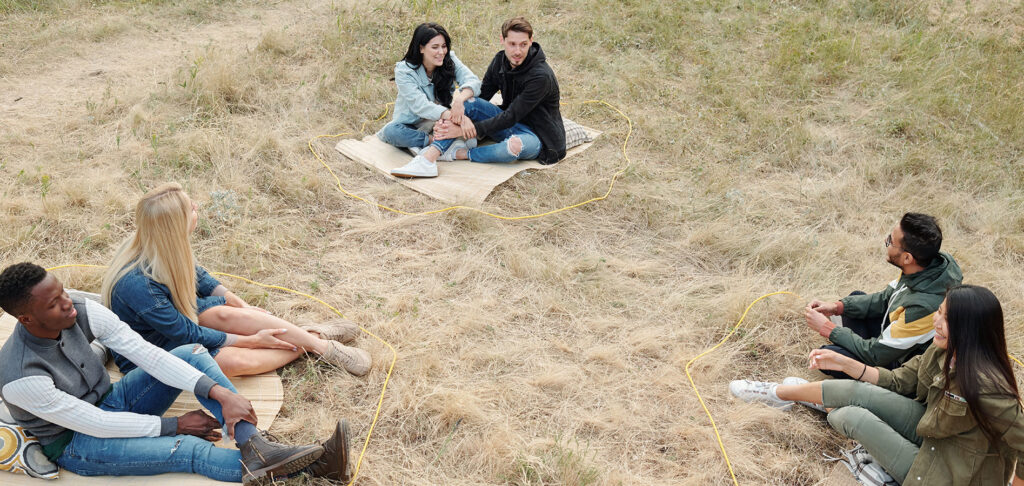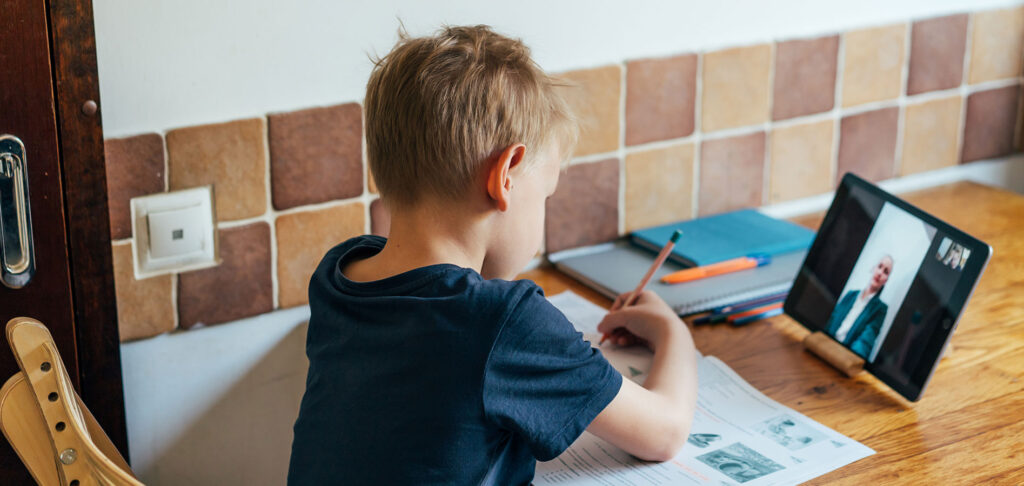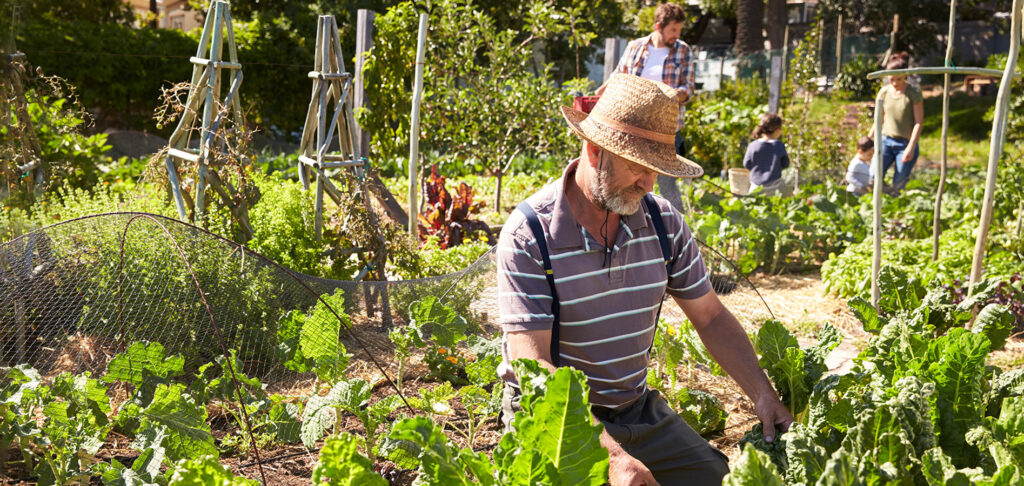Since the pandemic started, there has been a lot of discussion about how this situation has allowed us the opportunity to take real action to solve long-standing problems. Everyone agrees that it’s hard to predict what the pandemic will permanently change in our lives, but I would argue there are some known variables we can examine for improvements.
I want to push the conversation forward to get serious about identifying the problems that need to be solved and working toward real solutions.
If we set ourselves the challenge of creating a more resilient society that can weather future pandemics with a greater degree of efficacy, the first step is to identify the underlying problems that make us vulnerable to a pandemic. Below I offer five suggestions of underlying problems to begin the conversation. There may be more, and I welcome feedback and input on what we need to focus on to achieve meaningful progress.
Stop/Reverse Ecological Damage and Wild Land Encroachment That Facilitates Disease Migration to Humans.
If we want to stop pandemics from happening, we have to understand how they start. According to the Food and Agriculture Organization of the United Nations, 61% of human pathogens are zoonotic, meaning they originate with wildlife. Animals carry many viruses, and occasionally, a virus mutates to allow it to infect humans. At that point, the virus can only migrate to humans if there is close enough contact between humans and the infected animals to allow the virus to make the trip.
This constitutes one root problem to be solved to prevent future pandemics. What are some possible solutions? The most effective way to prevent the spread of pathogens from wild animals to humans is to minimize human contact with wild animals.

A possible solution: Limit human incursion into wildlife habitats.
To keep the biosphere healthy while solving this problem, the optimal solution is to make sure wildlife have their own healthy habitats. The human incursion into these habitats should be minimized. The biggest danger is when human habitats push into wildlife habitats.
The wildland-urban interface (WUI), or the area where human development meets wildlife habitat, has grown by 18% per decade between 1990 and 2010 in the western United States, according to a 2018 study published in the Proceedings of the National Academy of Sciences.
The WUI is growing worldwide, and it has many detrimental effects, with the threat of new human pathogens being one of them. The WUI is normally measured by the effects of wildfire, which gives a hint of how many ways the growth of the WUI negatively impacts human society. The threat of a new pandemic is just one reason to address this issue.
What Can Designers Do?
How can design impact such a large-scale systemic problem? To start, we need to minimize future development that would encroach on the WUI and focus instead on infill development in areas already built up.
One challenge, of course, is that this is not a problem any one person can solve. It may take a cross-agency and cross-organization approach that looks at entire bioregions to enact solutions. I guess that this will have to be legislated for such a shift to happen. While individual municipalities enacting limits would be helpful, it needs to be a region-wide coordinated effort to be effective. Action will need to be done based on data, which means scientists and regional non-profits will need to be involved in the conversation.
What can an individual designer do? We can always put the evidence in front of our clients and give our best advice. Before we can do that, we must become educated ourselves, especially in the intricate workings of our own region’s ecology. We can each reach out to our local organizations and governments to get the conversation started. If we do not instigate and support the efforts, who will?
Encourage Resilience for Individuals and Societies.
With 61% of human pathogens being zoonotic (coming from animals), that means the other 39% come from other sources, so there will still be a threat of possible pandemic even after WUI growth is minimized. In an ideal world, human society would be set up to be resilient in the face of such a threat. As designers, how can we move society toward resilience?
What is resilience?
The first thing we must understand is what resilience is so we can determine how to encourage it. According to the Oxford English Dictionary, the definition of resilience is “the capacity to recover quickly from difficulties.” We must start with the understanding that difficulties will come, and we work to strengthen the pillars that allow us to recover as individuals and as a society.
What pillars can strengthen our society’s resilience?
Physical fitness, mental health, financial stability, and strong interpersonal relationships are four that come to mind. If we have a solid foundation in those four areas, we can handle many curveballs from life without losing our balance.

As a society, what pillars are important? I would argue that they are equally important and that strong interpersonal relationships must include having meaningful conversations with people we disagree with to find common ground. For our society to be healthy, we must talk things through and reach compromises that allow us to function.
How can designers grow these four pillars?
I don’t pretend that we can solve every problem with design, but we can find ways to encourage people to move toward a healthier position.
- For physical health, making sure public open space is available for all is a start.
- Encouraging things like community gardens in every neighborhood would have the triple benefit of encouraging connection with nature, exercise, and availability of fresh vegetables.
It’s important to keep in mind that encouraging resilience goes beyond just recovering from a pandemic. There will always be fresh crises to deal with, as individuals and as a society, and each of them will need its own tailored response to deal with its individual characteristics. If we focus solely on designing for the Covid-19 pandemic, we will be caught out at some point in the future when another crisis needs a different response.
As designers, we need to make sure that we offer multiple options when possible for each function we design so that when we need a different response, it is available. For instance, I’ll pose an intentionally extreme example. In response to Covid-19 and the need for social distancing, it would be possible to replace park benches with individual chairs with plastic shields between them. I would argue that rather than going to such an extreme, we should prioritize creating more public open space so that people have the room to social distance when necessary, and the flexibility to use the space in other ways when it becomes appropriate.

Design for What We Value
In this case, I’m not referring to “design values” like designing for the genius loci or for the spirit of the time. A crisis such as this pandemic can highlight ways that we can improve as a society. One thing that became clear during the lockdown is that we need to keep our societal values in mind whenever we are designing.
A good example of this is when the schools had to close, and many families were left with no good option for incorporating education into their home life. We often hear education touted as critical to the future of society, yet we haven’t consistently carried that value through as we designed our cities and homes. If education is something we value as a society, our design solutions should address education whenever possible at multiple scales (i.e., homeschooling, community education opportunities, adult education, etc.). Building a school is just one step in valuing education in our communities.

How can designers strengthen our values?
Of course, the hard part is that in order to design for our values as a society, we have to first articulate our values. As designers, one of the most important things we could do in this area is to help facilitate that conversation. There are many voices to be heard, and it won’t necessarily be easy to distill out the values that everyone can agree on, but it is necessary if the design professions are to authentically integrate society’s values into the built environment.
This isn’t a new dilemma. The design professions have been wrestling with incorporating societal values for as long as design has been practiced. It’s worth revisiting the conversation in light of what the current situation can teach us.
Reference: Handbook of Ethics, Values and Technological Design by Jeroen van den Hoven, Pieter E. Vermaas, Ibo van de Poel
Help Improve Human Health to Allow the Natural Immune System to Be Stronger.
Research has clearly shown that the overall health of the average American has declined over time. According to the Center for Disease Control, cancer rates, diabetes, obesity, among others, are increasing among the US population, and these types of underlying conditions have been designated a risk factor for the Covid-19 virus. There are many factors that contribute to the worsening health of the American public, including the Standard American Diet, lack of exercise, lack of sleep, and so on.
Helpful Links and References:
- U.S. Dept. of Health and Human Service: Health, United States, 2016 with Chartbook on Long-term Trends in Health
- Dietary Guidelines 2015-2020: Current Eating Patterns in the United States
- National Center for Chronic Disease Prevention and Health Promotion: Lack of Physical Activity
- Division of Sleep Medicine at Harvard Medical School: Consequences of Insufficient Sleep
How Can Designers Contribute to Human Health?
The challenge for designers is first to understand these contributing factors and then find ways to help people improve them. It’s easy to make assumptions, but we need evidence-based solutions for these issues. Would people eat more fresh vegetables than processed foods if they had easy access to community gardens and farmers’ markets? Would they exercise more if they had easy access to walking networks or bike trails? What are examples of communities that have successfully nurtured healthy lifestyles, and how did design contribute to their success? Many people are working on these types of questions, and it’s time to bring them together to synthesize their findings into actionable design solutions.

Examine Infrastructure and Health Care Design for Ways to Improve Healing and Reduce Exposure in Times of Contagion.
There is no way to know exactly what form a future contagious disease will take, so this is another effort where we need to build flexibility into the system. Before making solid recommendations in this area, there are many questions to be answered, but asking the questions is the first step to improving the system.
Similar to improving human health through design, health care itself is an area where many researchers and designers have been working for decades to determine which design interventions can promote optimal patient outcomes. The pandemic offers the opportunity to examine the hospital itself and how it integrates into the community.
As designers, we can find answers to questions like:
- What are the points of contact within a city where contagion tends to happen?
- Should we return to the age-old concept of locating hospitals outside the city where patients could have access to plenty of natural space to facilitate healing?
- If so, would city hospital nodes be more like triage centers where patients with certain types of conditions are sent to dedicated locations? Meaning, if a patient needed to be admitted to a hospital, they could be placed on a shuttle or ambulance as appropriate and taken out to the hospital in the country for care.
- Could this possibly lead to greater equity in health care outcomes, with triage centers being easier and less expensive to locate in every neighborhood?
- Could the hospital likewise be built more economically outside the city where land and building costs are lower?
I don’t have the answers to these questions, but asking questions that encourage solution discovery is the first step. I hope we will find ways to share and discuss many ideas and do the research needed to find answers.
Find Answers and Take Action
There are many areas where we could focus attention in response to the pandemic, and these are just a few options. I hope that this will spur thought and discussion to decide which problems are most important to focus on. If we hope to make real progress based on what we learn from this experience, we need to start these conversations within each of our industries.
